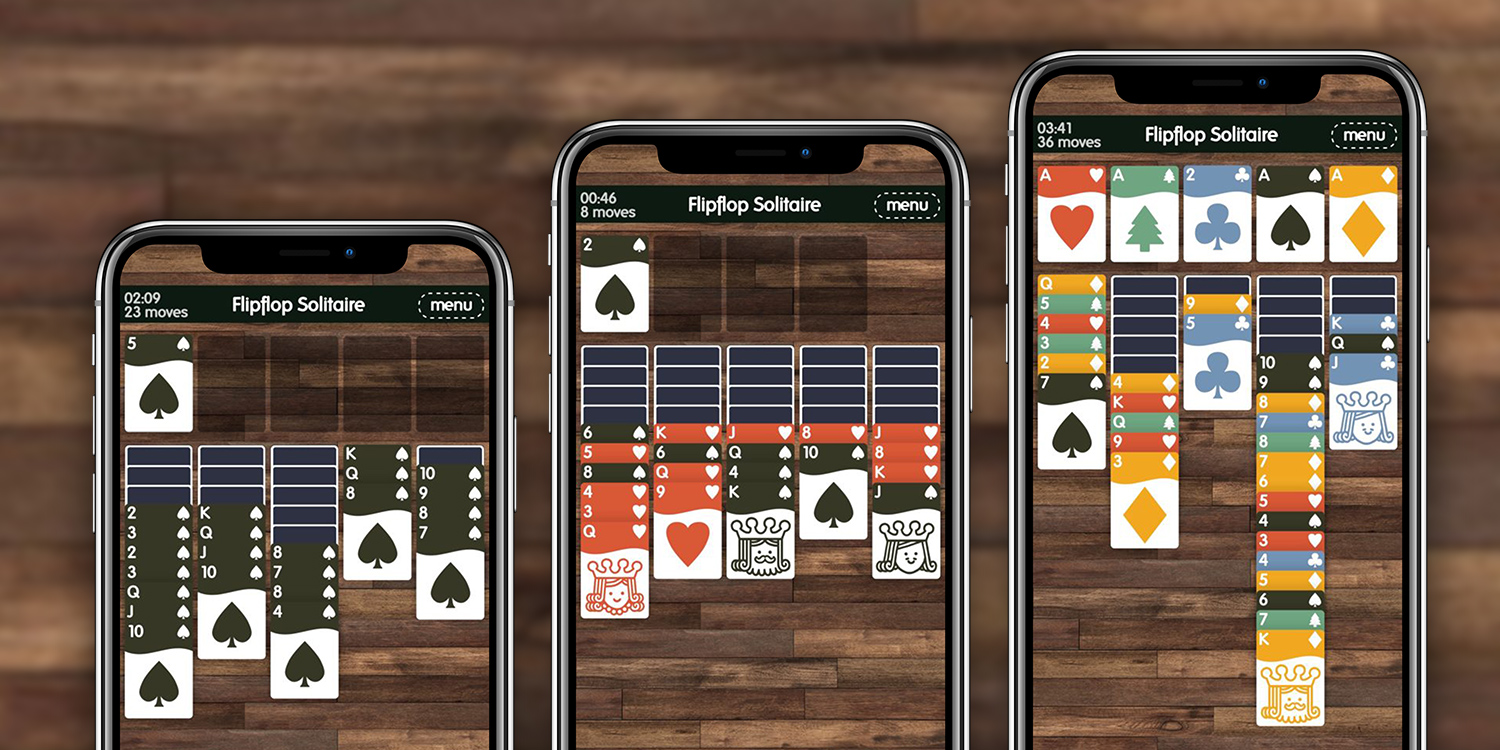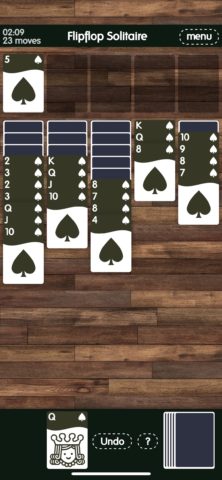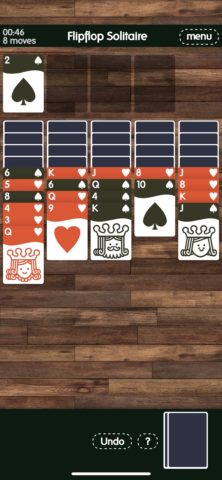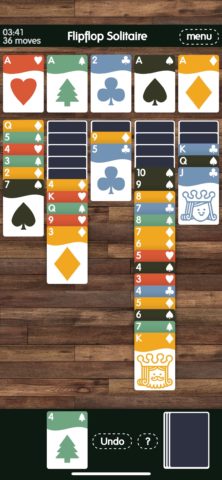Developer: Zach Gage
Price: Free
IAP: £3/$3 unlocks full game
Size: 142 MB
Version: 1.0.2
Update! Zach Gage has updated Flipflop Solitaire a number of times since our initial review. Most of these tweaks have been bug and stability fixes, but he’s also added a number of ambient sounds and a whole new Numbered Decks mode.
How does it play today? Solitaire is pretty timeless, and Flipflop is a particularly clean and sharp example of the format. Unsurprisingly, then, it still plays great in 2020. The new Numbered Decks mode essentially adds a bunch of preset deals that are the same for everyone, adding an extra social/competitive twist to the game. All in all, Flipflop Solitaire is as fun as it was before – if not more so.
Revised rating: Still a neat twist on Solitaire. ★★★★½
—–
Our original review, written in November 2017, is presented in its entirety below.
Thanks to Microsoft Windows, Solitaire has become the one video game that non-gamers play. Even the most seasoned of surreptitious office players will meet their match with Flipflop Solitaire, though.
Developer Zach Gage has a handy knack for taking an established game and twisting it into interesting new forms. He did it with chess in Really Bad Chess, and he’s even tackled Solitaire once before with the Poker-inflected Sage Solitaire.
Flipflop Solitaire sticks much closer to the basic form of the host game. You’re still flipping and stacking cards sequentially across columns, steadily siphoning them off into four neat piles according to suit.
However, there are a couple of seemingly minor tweaks that really serve to take Solitaire to another level – starting with the fact there are just five columns as opposed to seven or ten.
Beyond that, the main twist is that you can sort stacks into both descending and ascending order. If the top card on a pile is a four, for example, you could play either a three (as would be typical) or a five on top of it.
This turns out to be a double-edged sword. On the plus side it means that (almost) every deal is solvable, which isn’t always the case with traditional Solitaire. However, it’s also much easier to tie yourself in elaborate knots if you don’t keep your card piles orderly.
That’s exacerbated by the fact that dealing a fresh card when you can’t find anything to do will actually place a new random card onto each of the five main piles. This can really clog up even the most promising of games.
You’ll also note that you have the option of playing with anywhere between a single suit and five suits. Upping the suit count is a neat way to increase the difficulty level, but it also changes the dynamics of the game. There’s just the one style of play, but the inclusion of extra suits mixes things up enough that it feels like more.
With more suits, you can no longer shift runs of cards from one pile to another unless they’re of the same suit. This will really throw you if you’ve been playing a lot of the default single-suit mode, as it forces you to think way more before you move.
Conversely, you can place any card you like on a blank slot – not just a King – which can ease the pressure in certain situations.
All of these subtle rule twists combine to create a compelling mutation of the classic game of Solitaire. Beyond the single-suit mode, it’s tougher and more complex than standard Solitaire – but the greater number of permutations make each game much more of a cerebral workout than before.
If you regularly clean up rounds of classic Solitaire and find yourself itching for a new challenge, give Flipflop Solitaire a go. Its warmly familiar exterior hides a whole new dimension of solo card arranging.






